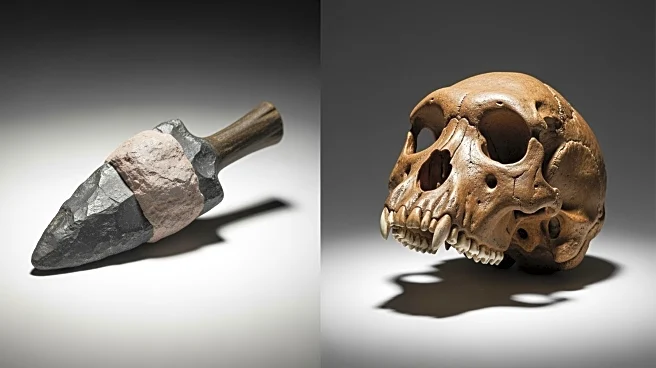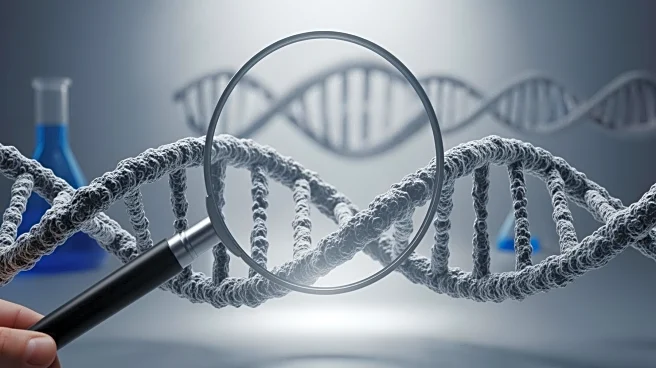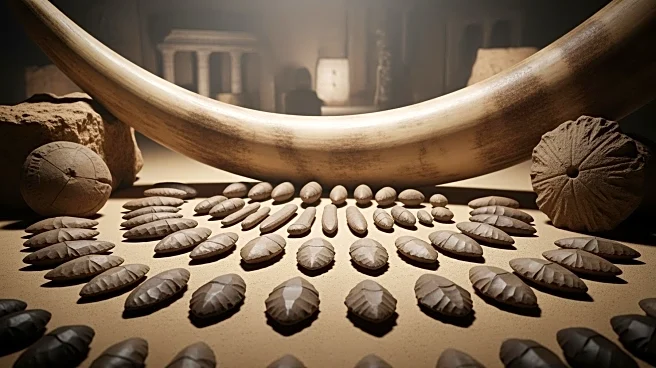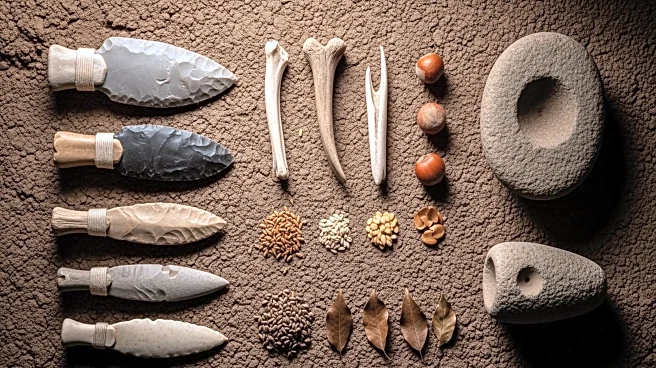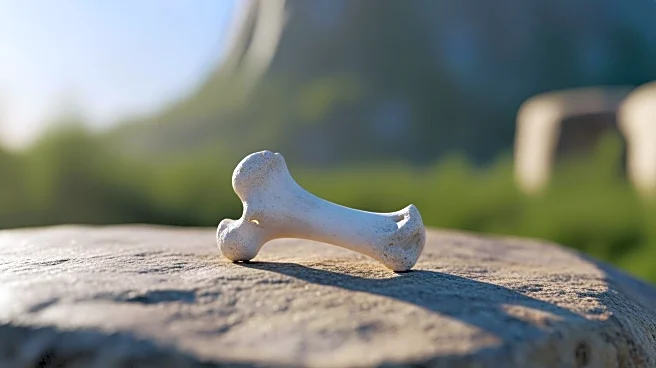What's Happening?
A recent study published in Science Advances has uncovered that early humans and their ancestors were exposed to lead nearly two million years ago, potentially influencing the evolution of brain and language development. Researchers from the University
of California San Diego and Southern Cross University analyzed 51 fossilized teeth from Homo sapiens, Neanderthals, and extinct apes, finding lead in 73% of the samples. This exposure, originating from natural sources like soil and volcanic dust, challenges the notion that lead exposure is solely a modern issue. The study suggests that a genetic mutation in modern humans may have provided resilience against lead's toxic effects, aiding in the development of communication skills crucial for survival.
Why It's Important?
The findings of this study have significant implications for understanding human evolution and the factors that contributed to the survival and advancement of Homo sapiens over other hominins. The genetic mutation in modern humans that provided resistance to lead's harmful effects may have been a pivotal factor in the development of complex communication and social structures. This advantage could have facilitated better cooperation and cultural transmission, essential for thriving in diverse environments. The study also highlights the intricate relationship between environmental factors and genetic evolution, offering insights into how early humans adapted to their surroundings.
What's Next?
Further research is needed to substantiate the hypothesis that lead exposure played a role in human evolution. Scientists aim to explore the genetic differences between modern humans and Neanderthals more deeply, particularly focusing on the NOVA1 gene and its impact on brain development. Additionally, the study opens avenues for investigating other environmental factors that may have influenced evolutionary paths. Understanding these dynamics could provide valuable knowledge about human resilience and adaptability, informing current discussions on environmental health and genetic research.
Beyond the Headlines
The study raises ethical and scientific questions about the role of environmental toxins in shaping human evolution. It challenges the perception of lead solely as a modern pollutant, suggesting its historical presence may have inadvertently contributed to human advancement. This revelation prompts a reevaluation of how natural elements have influenced genetic development and survival strategies throughout history. The research also underscores the importance of interdisciplinary approaches in studying evolution, combining genetics, archaeology, and environmental science to uncover complex evolutionary narratives.
